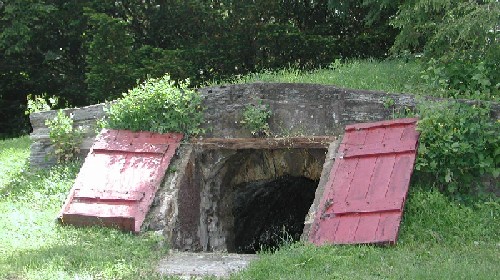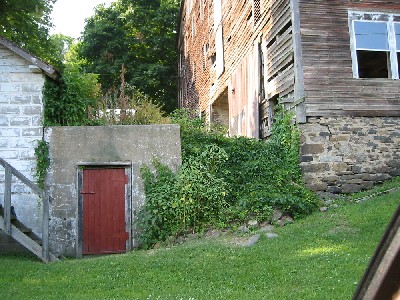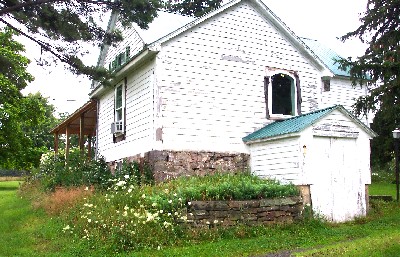Root Cellar
A root cellar is a below-ground excavation, sometimes vaulted, sometimes floored with stone, and with access via a door and sometimes steps. Its purpose is to exploit the year-round constant temperature that prevails below frost level (around 50-55 degrees Fahrenheit) to preserve such items as potatoes, carrots, cabbages, and cole crops (eg. Brussels sprouts, kale, etc.). Rural Pennsylvania root cellars range in size from just three or four feet square, to large vaulted space with room enough for an adult to stand erect. The root cellar's siting varies; usually it is within the house's orbit, but sometimes root cellars were dug next to the barn. Also, it is important to note that sometimes root cellars were incorporated into the fabric of a farmhouse or barn.
The root cellar does not appear to be connected with any particular ethnic group. Root cellars were constructed and used from the 18th century into the refrigeration era.
The root cellar should be interpreted as a critical element in farm subsistence strategies, particularly over the long winter in the days when all eating was seasonal.
While the entire family was probably involved in harvesting, storing, and retrieving articles from the root cellar, it is likely that women performed most of the labor, since they were the chief gardeners and they controlled most of the food preparation and processing.

Philip Erpff House root cellar, Schaefferstown, Lebanon County.

Root cellar, North Center Township, Columbia County.

The small gabled structure in Potter County is a potato cellar; it is located next to a kitchen ell.